#czechoslovak cinematography
Explore tagged Tumblr posts
Text

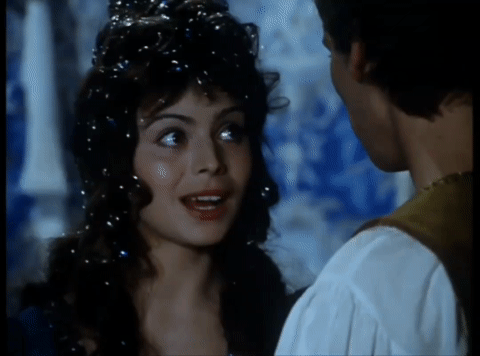
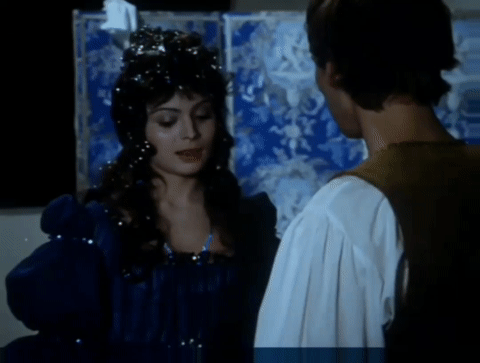
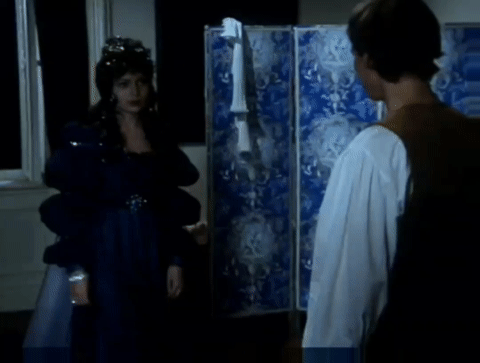




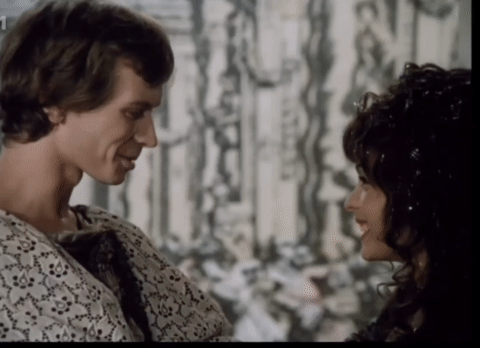

Princ a večernice (1978), rež. Václav Vorlíček
#princ a večernice#The Prince and the Evening Star#1978#70s#václav vorlíček#czechoslovak cinematography#pohádka#film#aesthetic#giphy#libuše šafránková#juraj ďurdiak
17 notes
·
View notes
Photo
💫✨️😍

Princ a Večernice (1978)
#princ a večernice#1978#václav vorlíček#pohádka#libuše šafránková#czechoslovak cinematography#byla tak krásná <33#aesthetic
87 notes
·
View notes
Text






Bílý ráj (1924)
[letterboxd | imdb]
Director: Karel Lamač
Cinematographer: Otto Heller
Performer: Anny Ondra
#1920s#1924#Karel Lamač#Anny Ondra#cinematography#czechoslovak film#cinema#silent cinema#silent film#christmas#christmas movies#winter#world cinema#silent movies#film stills#my edits#cinemaspam#filmblr#classic film#classic cinema#classic movies
24 notes
·
View notes
Text

"The Devil's Trap" (1962) František Vláčil
Original title: Dáblova past
Country: Czechoslovakia
6/2025
1 note
·
View note
Text
youtube


youtube
"Daisies" is a Czechoslovakian film directed by Věra Chytilová in 1966. The movie is about two young women named Marie I and Marie II, who rebel against the societal norms and engage in various absurd and playful activities. The film is known for its non-linear narrative structure, experimental cinematography, and satirical commentary on consumerism, gender roles, and the political situation in all of Czechoslovakia at the time. The movie is a quirky journey, exploring themes of nihilism, government anarchy, and feminism. The film's experimental narrative structure, as well as its use of editing techniques, such as jump cuts and unconventional camera angles, influenced many American filmmakers. The film's portrayal of rebellious and non-conformist female protagonists also influenced the feminist movement in the US film industry. One example of this film breaking the societal standards especially for women, is when the two protagonists initiate a food fight at a very fancy dinner. We see Marie get up onto the table and make a mockery out of the rich feast as she wraps the drape around her and walks down the table strutting and giggling. Its influence can still be felt in contemporary films that explore themes of feminism, rebellion, and non-conformity. "Věra Chytilová’s 60s masterpiece Daisies is a brilliantly surreal trip into an aesthetic paradise, and a utopia where women are liberated from the conservative conventions of etiquette." (Olivia Single, AnOther) Vera Chytilova was a Czech filmmaker and one of the most important figures of the Czechoslovak New Wave movement of the 1960s. She was known for her experimental approach to filmmaking. This was Chytilova's most famous film. Described as an irreverent feminist manifesto. The film was controversial at the time of its release and was banned by the Czechoslovak government for its perceived subversive content. Throughout her career, Chytilova was known for her bold and provocative style, as well as her commitment to pushing the boundaries of what was considered acceptable in filmmaking. She was also a vocal advocate for women's rights and gender equality, and her work continues to inspire filmmakers around the world today. "Marie I and Marie II, dancing in front of an apple tree and then eating one of its fruits. The parallel between the film and an Edenic fall from grace is distinct – here, they lounge in their lingerie and pajamas surrounded by apples and croissants, a perfect depiction of the cardinal sins of sloth, gluttony and lust. In addition to being a wry comment on conditioned morality, the film consistently offers fashion inspiration;" (Olivia Singer, AnOther) Overall, Chytilova broke many film standards in Czech film making and inspired many people by doing so. Her confidence shone through in her personality as she worked effortlessly to protect and abide by her believes in feminism and women empowerment through her work. "Daisies" is a perfect depiction of breaking conformity and showing what keeping someone to such a high standard will do to them mentally. This movie is a 10/10 in my book and I highly recommend watching it.
4 notes
·
View notes
Text
Welcome to Ethereal Beauty
What is Ethereal Beauty
A channel dedicated to the celebration of feminine elegance and grace. Here, you'll find breathtaking visuals of timeless beauty – captivating portraits of young beautiful women that embody charm, sophistication, and ethereal allure.
This channel is for those with a tastefully developed sense of beauty, who appreciate the art of photography & cinematography and the delicate interplay of light, emotion, and form. Each video is a visual journey, crafted to inspire, uplift, and remind us of the artistry found in the human form.
"The female body is a work of art, sculpted by nature and celebrated by artists."
– Leonardo da Vinci
Who am I
My name is Rastislav Marguš. I am a Czechoslovak born multi award winning Master Qualified European Photographer (MQEP) & former Boeing 787 Dreamliner Pilot. I have extensive experience both in flying and photography. Now working on multiple projects but focusing mainly on “Ethereal Beauty”.
Why should you support Ethereal Beauty
Cinematography is an amazing journey. In the last decade I have been perfecting my art and skills and it is my work which inspires you and brings you here. Thanx to my daytime job I have been able to fund my journey as an artist. I have been tirelessly working so that I can offer only the best of the best. Now to be able to bring my work to my fans, am turning to you with an exclusive offer to get your hands on my work in the form of Premium Photography, Inspirational Videos & Limited Edition Prints.
What will I do with your support
Your support is essential so that I can continue to bring to you what you know me for…unmatched premium content, and all of that in a much improved way. Your funds will go towards improving my content so that I can provide you with better and better Images, higher quality Epic Videos with awesome music and Prints which will give your living space another dimension. My biggest Goal is to publish a book or many books for that matter one day. I love books and photography, who doesn’t. Let’s get together and let’s create something big, you won’t be disappointed. I have so many plans and ideas, please show me your trust and support.
Thank you for considering supporting my work. Every supporter counts towards the goal of improving my work and thus the content you can expect!
THANK YOU SO MUCH!
Rastislav Marguš, MQEP
To Learn more about me and my work please visit
#EtherealBeauty#TimelessElegance#FeminineGrace#DelicateCharm#DreamyAesthetic#SoftBeauty#DivineFeminine#FineArtPhotography#PortraitPhotography#AestheticPortrait#LuxuryPortrait#FashionEditorial#ArtisticPhotography#AngelGlow#CelestialVibes#HeavenlyAesthetic#RomanticElegance#DreamlikeBeauty#WhimsicalMood#FashionShow#WomansBeauty
1 note
·
View note
Text
Valerie and Her Week of Wonders
T 1970 ‧ Horror/Fantasy ‧ 1h 17m
Valerie and Her Week of Wonders is a 1970 Czechoslovak surrealist fantasy horror film co-written and directed by Jaromil Jireš, based on the 1935 novel of ...
Valerie, a thirteen-year-old girl, lives with her grandmother after the death of her parents. She is harassed by a monster who stole the earrings given to her by her mother.
Release date: February 23, 1972 (France)
Director: Jaromil Jireš
Languages: English, Czech
Screenplay: Jaromil Jireš, Ester Krumbachová, Jiří Musil
Cinematography: Jan Čuřík
Distributed by: Janus Films, Ustredni Pujcovna Filmu
Starring
Jaroslava Schallerová
Helena Anýžová
Petr Kopřiva
Jiří Prýmek
Valerie and Her Week of Wonders (film) - Wikipedia
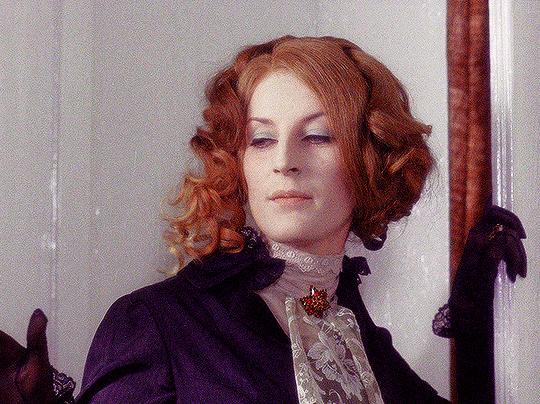

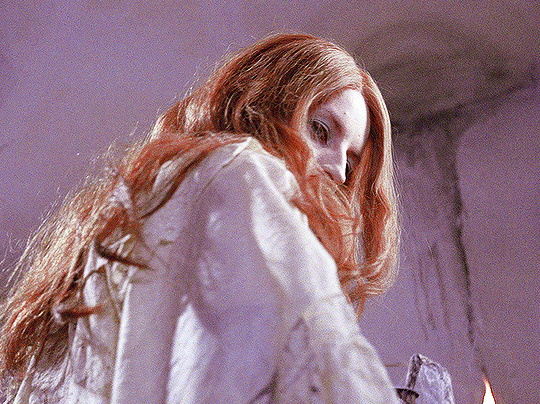
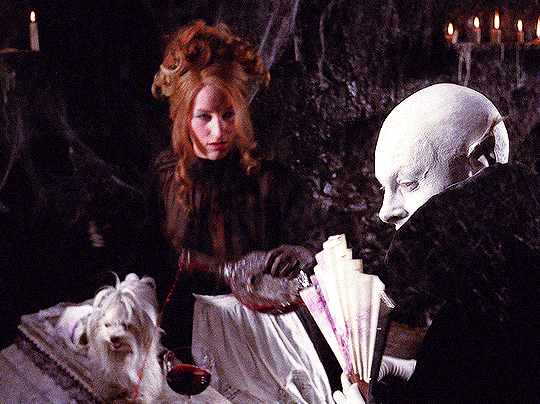
Helena Anýžová as cousin Elsa in Valerie a týden divů / Valerie and Her Week of Wonders (1970) dir. by Jaromil Jireš.
1K notes
·
View notes
Text
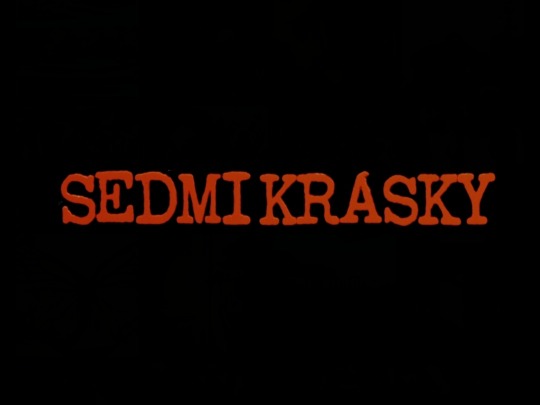

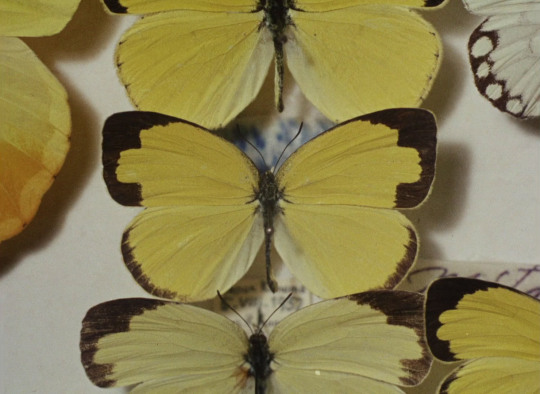

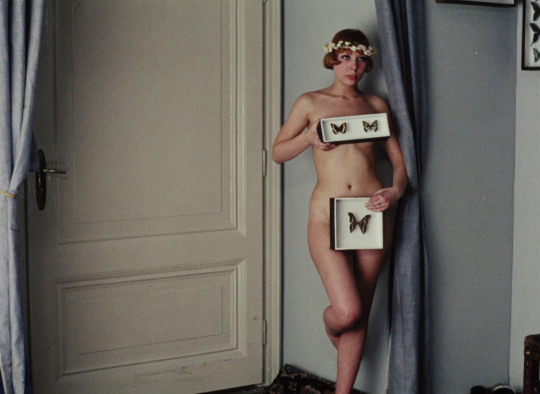
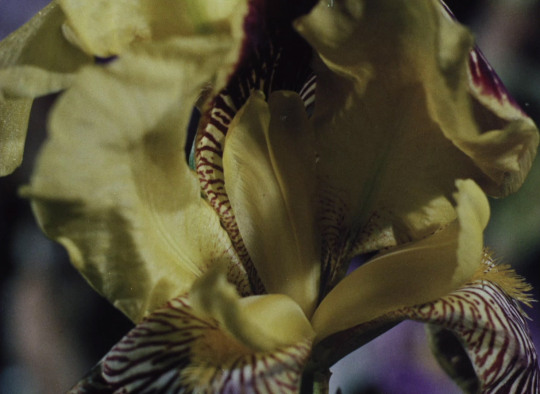
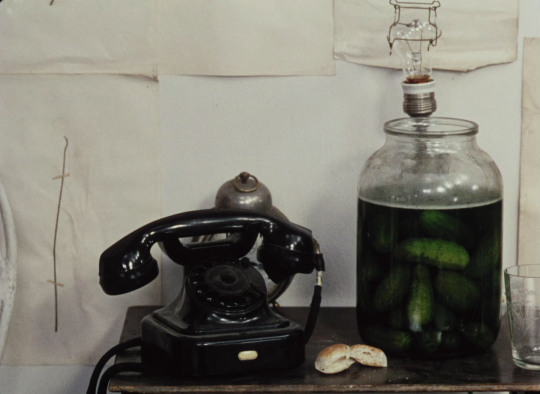


#76
#daisies 1966#vera chytilova#sedmikrásky#1960s cinema#jitka cerhova#ivana karbanová#czechoslovak cinema#czechoslovak new wave#cinematography#movie screenshots#movie screengrabs#movie frames#movie screencaps#movie#movies#cinematography appreciation#escapism through film#the beauty of cinema#films#10 frames from film
257 notes
·
View notes
Text
Sedmikrasky- “a necrologue about a negative way of life”

I first saw this film when I was about 13 and it's hard to put into words how big of an impact it had on a young girl just entering adolescence. It was only then that I began to see more and more often that the world in which I live is not built for me and does not belong to me, therefore the story of two young women who take advantage of its corruption for their own benefit and fall into a spiral of hedonistic madness appealed to me so much. I was and still am infatuated with girls' disobedience to a world led by men. Me and my best friend at the time wanted to base our entire personalities on the main characters.

The main characters, Marie I and Marie II were everything I wanted to be, I wanted to be as brave as they are and not to take into account what others think about me, despite the fact that I see the cruelty and decay of this world, as an individual, I am not able to with it fight or fix it, so why can't I use my short stay on earth for my own pure pleasure?
“Sedmikrasky (eng. Daisies)” was directed by the one-of-a-kind Czech avant-garde filmmaker Věra Chytilová and is considered one of the most important films from the Czechoslovak New Wave. It was filmed two years before the Prague Spring, or more precisely in 1966. It was highly criticized by the right-wing. The authorities found it harmful to their ideas, which resulted in it being banned from theaters or export in the Czechoslovak Socialist Republic, and the director herself was banned from working until 1975. This movie is full of consumerism and a negative attitude towards the authoritarian system, the girls did not provide a moral example, they refused to play the roles that society required of them. Chytilova herself described it as "a farce on parasitism", it is also seen as a satire of the decadence of the bourgeoisie. the film was also, a counterattack to the Stalinist regime.
Chytilova collaborated on screenplay with Ester Krumbachova, who was a screenwriter, costume designer, stage designer, author and director, and has worked in productions such as 1970's “Valerie and Her Week of Wonders”.
The movie begins with a montage showing the movement of machines and bombs falling to the ground causing explosions, in the background we can hear rhythmic music that sounds a bit like a march.
Then we meet the two main characters Marie I and Marie II, which are a reflection of Anne I and Anne II of the “Seven Deadly Sins” by Kurt Weill and Bertolt Brecht. Young girls move like robots or dolls and are accompanied by creaking sounds. Chytilova ridicules the absurd demands on women in the male dominated society, and with this action she emphasizes how silly is the patriarchal ideal of femininity, which does not exist, but is only a performance. The way girls behave indicates the infantilization of women by society. However, Marie I and Marie II will later use this infantilization for their own benefit.
The girls sit on the beach, Marie II puts a wreath of daisies on her head, these flowers are a symbol of purity and innocence, and the wreath of flowers in Slavic culture was supposed to symbolize virginity. Another frequently recurring symbol is green apples (the apple of temptation). Marie I blows a trumpet. The girls find the world spoiled, so why can't they be spoiled as well? Suddenly they find themselves in a clearing in the middle of which there is a tree with forbidden fruit. Marie II takes a peach from it. Then the girls are in their room, Maria II spits the pit from her mouth.

The first of the girls' “pranks” is a date in a restaurant with an older man whom they use to satisfy their gluttony and then leave him at a train station. The man is so blinded by their affection towards him that he is unaware of their obvious pretending and playing with him. They are not like real humans, they are more like images, which also highlights how women are perceived in society. What is the point of my existence if not to be looked at?

Wherever they go, they wreak havoc. They make a fuss in the bar, they use men more and more often, they play with them, men are practically only a source of food and entertainment for them, and their telephone numbers are written on the walls of their flat, which also changes beyond recognition with the unfolding action of the film.
One of the scenes that touched me a lot was when a woman working in a restaurant that girls go to tells them in the toilet that they don't have time for her anymore, to which the Maries reply that they are in a hurry not even looking at the woman, only correcting their makeup in the mirror, the woman looks at them kindly and sings "youth, why do you run away so quickly, why, as I recall you, an eye tears" but they ignore it rejecting the fact that one day they will have to grow old as well.
youtube
One of the most common sins they commit is gluttony. In one of the scenes they are lying on their bed, their apartment looks like a tornado passed through it, in the background you can hear the voice of a man who professes Marie II love from the telephone receiver. The girls treat these confessions like a background noise, a radio broadcast and are too busy feasting.
youtube
They jump out of a moving train, steal money, but the truth is that they are still missing something and are not entirely happy, but they try not to think about it. Marie II turns on the gas in their apartment at one point, but is saved by the fact that she forgot to close the window. They think a lot about their existence and feel misunderstood and isolated from the rest of the world.
“-Do you feel it? -What? -How quickly the life passes”

Finally, they go to the countryside with the intention of spreading their chaos on a larger scale, but nobody pays attention to them there, they want desperately to be noticed. Eventually they find a banquet hall overflowing with food, and they immediately start eating and drinking, they have a food fight as well. They break plates and glasses and finally climb onto the huge crystal chandelier then begin to swing on it.
youtube

Suddenly they fall from the chandelier right into the lake and start to drown, but no one wants to help them, they shout that they don't want to be spoiled anymore.
Then chytilova shows viewers what their attempt to fix everything might look like. They break into the banquet hall again and try to clean up the mess they made. But what is broken cannot be saved. They try to fix the shattered plates and clean all the food. When cleaning they whisper: “we will polish it and clean it and we will be so happy”,” because we are polite, happy and hardworking”, “thanks to our work we are both so happy”. Eventually they lay down on the table after their hard work and say: -We are both so happy. Say that we are happy -Are we pretending this? -No. We are really happy -But it is not a problem Then the crystal chandelier falls on them and the scene cuts to a war footage. Vera Chytilova dedicates this film “to those who fall ill over a trampled salad”. The Maries themselves would certainly not describe themselves as feminists, but their anarchist approach to a system that is unfair to them may be considered feminism. Many people say that this film focuses on criticizing the actions of these young girls, but I believe that it is a criticism of the world that surrounds them, and the very presentation of women and their rebelliousnes in chytilova's film is really modern.

Both Maries use their inferior position in society and their hyper-femininity for their own purposes, It is their way of finding themselves and surviving in a world that doesn't make any sense.
The Czechoslovak New Wave is divided into two types: symbolic/allegorical, such as Vera Chytilova's films, and realistic films, such as those of Milosa Forman, but they are united by the observation of man and the analysis of his nature, as well as a deeper analysis of humanity and reality.
“Sedmikrasky” is edited to look like a collage. From seemingly incoherent shots, a fragmented plot with elements of a morality play emerges. The film is sometimes black and white, and at other times it flashes in different colors, lots of jump cuts and discontinuity. The editing of the film is as rebellious as the main characters are. It resembles images that can be seen in dreams.
#sedmikrásky#daisies#daisies 1966#vera chytilova#new wave#czech new wave#czechoslovak new wave#czech cinema#czechoslovak cinema#film#cinema#film history#cinematography#stokrotki#european cinema#art cinema#art film#eastern europe#easter european cinema#art#surrealism#surrealist film#feminine#femininity#60s#feminism#fantasy
75 notes
·
View notes
Photo


The Cassandra Cat (Czech: Až přijde kocour, also known as When the Cat Comes, 1963), directed and co-written by Vojtěch Jasný, cinematography by Jaroslav Kučera
#Czechoslovak cinema#The Cassandra Cat#When the Cat Comes#Cinematography#Vojtěch Jasný#Jaroslav Kučera#film restoration#1960s movies#woods#forest#cinema
9 notes
·
View notes
Photo








SUBLIME CINEMA #435 - CLOSELY WATCHED TRAINS
One of the great films of the Czechoslovak New Wave. Jiri Menzel passed away last year of COVID and I didn’t even know it. He was responsible for some fantastic work, including the banned Lark on a String which was shot soon after this one, but then was forced into a government induced purgatory for decades. Closely Watched Trains and Loves of a Blonde are two of my favorite Czechoslovakian films from that period but Milos Forman ended up with an illustrious career outside of his home country, while Menzel sharpened his craft under the censorship regime.
#cinema#film#films#filmmaking#movie#movies#moviemaking#great films#cinematography#cinephile#czech#czechoslovak cinema#czechoslovak#jiri menzel#rip#black and white photography#60s#60s film#60s eastern europe#eastern europe#cineholic#europe#world war 2#ww2#war film#love story#love film#love#novel
42 notes
·
View notes
Text

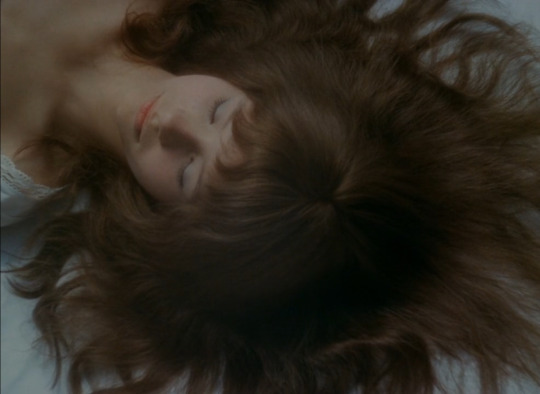

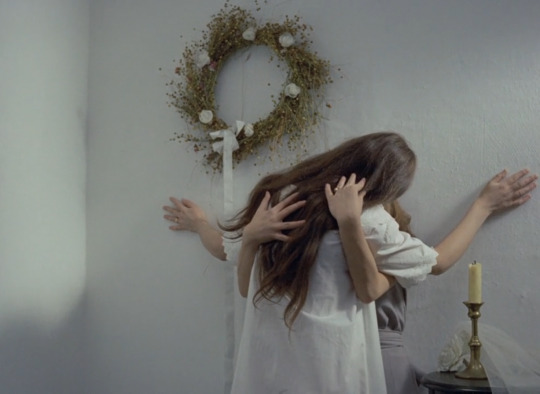

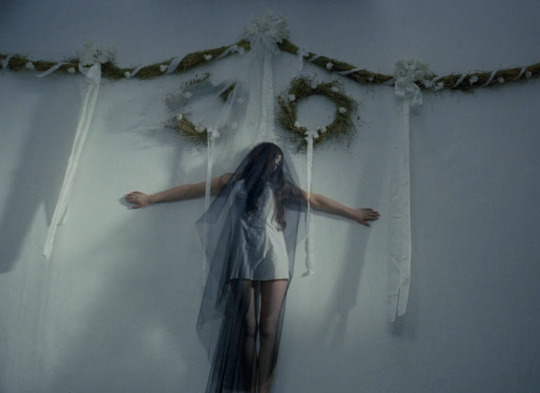


Valerie and Her Week of Wonders (1970) dir. Jaromil Jireš
#valerie and her week of wonders#czechoslovak cinema#czecholsovak new wave#jaromil jireš#cinematography#fantasy#czechoslovak fairy tale#fantasy horror#horror#film stills#film#criterion collection#1970s cinema#czechoslovakia#fairy tales#70s#vinatge#fairycore#czech film#magicrealism#czech fairy tale#surrealism#surrealist film#surrealist art#destiny's rainboww
104 notes
·
View notes
Text









Bílý ráj (1924)
[letterboxd | imdb]
Director: Karel Lamač
Cinematographer: Otto Heller
Performers: Lo Marsánová, Anny Ondra, Saša Dobrovolná, Josef Rovenský
#1920s#1924#Karel Lamač#Anny Ondra#cinematography#czechoslovak film#cinema#silent cinema#silent film#christmas#christmas movies#winter#world cinema#silent movies#film stills#my edits#cinemaspam#filmblr#classic film#classic cinema#classic movies#film
21 notes
·
View notes
Text

"The Devil's Trap" (1962) František Vláčil
Original title: Dáblova past
Country: Czechoslovakia
6/2025
0 notes
Photo




Helena Anýžová in Valerie and Her Week of Wonders (1970) dir. Jaromil Jires
Cinematography: Jan Čuřík
#Valerie and Her Week of Wonders#Jaromil Jireš#Jan Čuřík#Czechoslovakian film#czechoslovak new wave#czech film#czech cinema#czechoslovak cinema#czech new wave#movies#film#70s movies#70s horror#horror movies#arthouse horror#gothic horror#cinematography#Helena Anýžová#Jaroslava Schallerová
342 notes
·
View notes
Photo



Daisies. Věra Chytilová. 1966
#artfilms#poetic cinema#cinema#60s cinema#vera chytilova#czechoslovak new wave#the criterion collection#criterion channel#surrealism#cinematography#film#arthouse film
20 notes
·
View notes